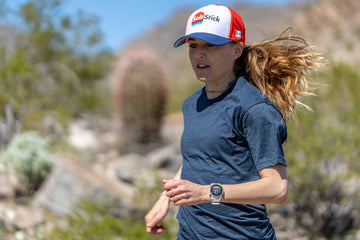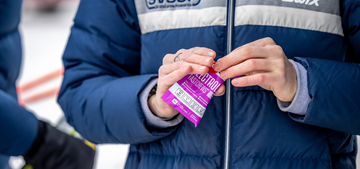
 Construction workers, landscapers, fire and rescue personnel, manufacturing laborers, electricians and other individuals who spend most of their days exposed to heat all have one thing in common: a risk for dehydration. Coupled with high levels of physical activity, heat can quickly deplete reserves of water and electrolytes, whether in summer or winter.
Dehydration, when not managed promptly, can contribute to fatigue, nausea and other symptoms that are detrimental to performance on the job, as well as increased likelihood of injury due to inattention or fatigue. If ignored for several hours, it can also lead to far greater problems, such as heat exhaustion or heat stroke, a dangerous and potentially fatal condition. According to the U.S. Bureau of Labor Statistics, environmental heat exposure contributed to 37 work-related deaths and 2,830 nonfatal occupational injuries and illnesses in 2015. Nearly 90 percent of the deaths occurred from June through September.
While there are several factors that contribute to heat exhaustion that are unrelated to dehydration, a proper nutrition routine will greatly help reduce your risk.
Construction workers, landscapers, fire and rescue personnel, manufacturing laborers, electricians and other individuals who spend most of their days exposed to heat all have one thing in common: a risk for dehydration. Coupled with high levels of physical activity, heat can quickly deplete reserves of water and electrolytes, whether in summer or winter.
Dehydration, when not managed promptly, can contribute to fatigue, nausea and other symptoms that are detrimental to performance on the job, as well as increased likelihood of injury due to inattention or fatigue. If ignored for several hours, it can also lead to far greater problems, such as heat exhaustion or heat stroke, a dangerous and potentially fatal condition. According to the U.S. Bureau of Labor Statistics, environmental heat exposure contributed to 37 work-related deaths and 2,830 nonfatal occupational injuries and illnesses in 2015. Nearly 90 percent of the deaths occurred from June through September.
While there are several factors that contribute to heat exhaustion that are unrelated to dehydration, a proper nutrition routine will greatly help reduce your risk.
The risk of dehydration for outdoor workers
The National Institute for Occupational Safety and Health (NIOSH), managed by the U.S. Centers for Disease and Control and Prevention (CDC), recommends that workers should be made aware of the many risk factors that may affect their heat tolerance. These factors include:- Hot temperatures
- High levels of humidity
- Direct sun exposure
- Indoor radiant heat sources (ovens, hot manufacturing processes, etc.)
- Physical exertion
- Not drinking enough fluids (dehydration)
- Personal protective equipment or clothing
- Certain medications
- Lack of recent exposure (not acclimatized)
- Advanced age (65+)
Early warning signs of dehydration
If you regularly work in hot conditions, it is imperative to listen to your body to help ward off any detrimental effects of dehydration. Common signs of dehydration include:- Excessive fatigue
- Trouble focusing
- Sunken eyes
- Rapid heartbeat
- Dry mouth
- Extreme thirst
Use proper hydration practices to reduce your risk
During physical activity, the human body relies on a mix of calories, water and electrolytes to fuel the physiological processes that keep us moving. Electrolytes play an important role in several of these processes, most notably by conducting neurological impulses and supporting the sweating process. Over time, if not replaced, these reserves run low, hampering the body’s ability to function. A proper nutrition routine will ensure these needs are met. For a sedentary person, relying on guidelines put forth by the U.S. Department of Agriculture (USDA) are sufficient, and a balanced diet rich in fruits, vegetables, nuts and whole grains is enough to replace electrolytes and calories. However, for workers exposed to high or prolonged periods of heat – for whom sodium losses can be double or triple the USDA recommended intake, according to one study – special preparation may prove beneficial. “In workers exposed to heat for many hours a day, the sweat loss can be as high as 12 litres, and the sodium loss from sweating at this rate could exceed 10 grams per day,” write the authors of the 2008 study. “Replacement of this daily electrolyte loss at regular intervals for individuals working in the heat is imperative in order to avoid possible electrolyte disturbance and impaired work performance.” The authors also warn against relying on sports drinks as the sole method for electrolyte replacement: “Given the carbohydrate concentration in most sports drinks recommending these would not be sound; fluid replacement beverages should have far less carbohydrate and ideally more than 15 mmol/L of sodium, although in the authors' experience palatability limits sodium content,” they write. Put in a simpler way, most sports drinks contain too much sugar and not enough salt. Not only is this detrimental to oral health, it also fails to serve the goal of proper hydration. Sweat typically has about 1,000 mg sodium/liter, and due to concerns about taste, a typical sports drink has 440 mg sodium/liter. If, during the course of activity, a person ingests nothing but sports drinks (or worse, water), at some point he or she will become hyponatremic – a dangerous condition characterized by low blood sodium levels. Many sports drinks also do not address any form of supplementation of the other key electrolytes – potassium, calcium and magnesium – potentially causing yet further issues. During the course of activity, it may be necessary to supplement your electrolyte intake with a product like SaltStick. Our SaltStick Caps and SaltStick Fastchews were specifically designed with active individuals in mind, and they are the only products of their kind that were formulated to closely resemble the electrolyte profile lost during activity: sodium, potassium, calcium and magnesium. SaltStick usage guides are available here. Of course, the proper electrolyte intake assumes a worker is also consuming adequate amounts of water, as the study’s authors advise in their paper.Conclusion
Proper hydration protocols are not only beneficial to the individual worker, but they can also improve a business’ bottom line by avoiding the type of fatigue and reduced productivity that stems from dehydration. Water and calories are an important part of the solution, but it is imperative to avoid overlooking electrolytes as a key part of the equation. Luckily, SaltStick can help take the stress out of planning by providing workers with the ideal ratio of electrolytes, mimicking that of sweat: 220 sodium to 63 potassium to 16 calcium to 8 magnesium. Countless people across the world – including many of today’s world-class athletes – trust SaltStick because our products have everything you need for electrolyte replacement and nothing extra. Learn more on www.SaltStick.com. Disclaimer: Contact your physician before starting any exercise program or if you are taking any medication. Individuals with high blood pressure should also consult their physician prior to taking an electrolyte supplement. Overdose of electrolytes is possible, with symptoms such as vomiting and feeling ill, and care should be taken not to overdose on any electrolyte supplement.
Tags:








